当前城市:淄博[切换]
- 手机雅思无忧

扫码登录
雅思听力题型剑桥例题详解(西双版纳雅思阅读真题及解析)相关内容,小编在这里做了整理,希望能对大家有所帮助,关于雅思听力题型剑桥例题详解(西双版纳雅思阅读真题及解析)信息,一起来了解一下吧!
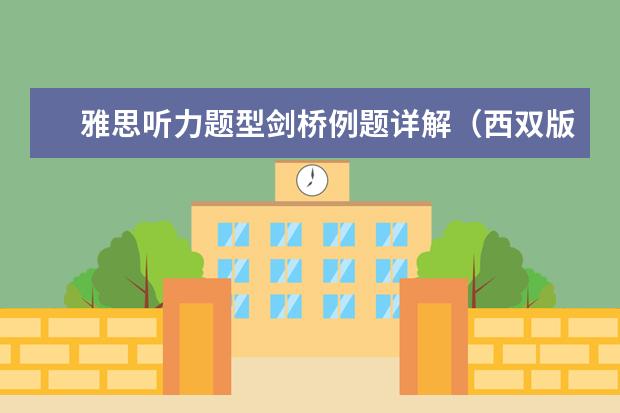
雅思听力题型剑桥例题详解
以剑桥六第59页的4道句子完成题为例,原题如下:
MARKETING ASSIGNMENT
21.For their assignment, the students must investigate one part of the _________.
22.The method the students must use to collect data is_________.
23.In total, the students must interview_______people.
24.Jack thinks the music preferences of _________listeners are similar.
当面对这样一组题目的时候,首先应该做的是“读懂题,划关键词特别是空前后关键词,预测并标记”。就是说在读懂句子意思的同时要划出关键词来,那么那些词是关键词呢?一般来讲包括有句子的主语谓语宾语,专有名词,术语以及年代和数字。其余的根据做题人自己的感觉也可以略有添减。但是空前后的关键词则是同学们比较容易忽略而以后必须要注意的。 这个划关键词和预测,标记都是同步进行的。
比如21题,主要是讲学生们必须研究什么东西的一部分,关键词可以划下“the students”, “investigate”, “one part of the” 这几个,其中“one part of the”又属于空前后的词汇那么就更要划下并且关注了。这个题不好看出内容来,只能大致猜测是要填学生们要研究的主题,但是是填个名词性的东西这一点应该是明确的,那么就可以在空格里标出 “n” 来提醒自己这个地方等下要填名词。按照这种 方法 ,上面四个题在读完题后应该成为下面的样子——
MARKETING ASSIGNMENT
21.For their assignment, the students must investigate one part of the ___n____.
22.The method the students must use to collect data is ________.
23.In total, the students must interview _______ people.
24.Jack thinks the music preferences of _________listeners are similar.
22题到24题没有标记是因为存在的可能性比较多,需要做题人自己心里面有数,知道有哪些可能性,然后在听到答案的时候立刻做出判断。下面给同学们介绍一下比较有代表性的能帮助大家预测的东西。22题是很有代表性的,属于在be动词比如 is , are , was, were 后面出现了空格了,那么这个空格里一般有三种情况,分别是填形容词(系表结构,描绘一个东西是什么样子的),名词(是什么,22题最后的答案就是说这个方法是什么方法), 动词被动(比如The window is fixed by Peter. 这个句子里就出现了is 后面是 fixed, 就是被 修理 )。
另外23题也很有代表性,属于在可数名词people前面要填东西,那也是有三种可能,分别是形容词,名词(两个名词连用,如ocean bottom), 以及数量词, 比如此23题最后的答案就是一个数讲要访问多少多少人。其余还有,在to 后面——可以加地点表示方位性,比如 “We‘ll have a trip to South Africa next month”。 当然考的最多的是to 后面加动词的原形构成 “to do” 的形式。
On 的后面——可以表示在……上,还可以在学术上表示论……问题,比如 an essay on environment conservation. 另外还要小心的是on的后面还可能出现填day或者date, 其中day是指周几,date是指几月几号,但是前面都是用on 的,比如on Wednesday, on April 13th. 在 in 的后面——可以表示在……里面,在……地方,在……方向上, 比如 in southeast, 还可以表示在某某方面, 比如 a class in money management,an expert in Biology, 特别要小心in 后面可以加年或者月,在听题的过程中可能突然出现,比如 in August, 或者in 1998. 在by的后面——可以表示某种方式,到某某时候为止(比如 by the end of term), 但是最重要的后面直接加人,要注意这个“人”不一定有具体的名字,不一定非得是填个Peter, Anna什么的.
比如在剑桥4第12页的第12题,题目的最后答案是The metal industry was established by local craft*en who lived in the area. 其余还有在for后面一般是加名词性成分表示目的性,在before 和after 后面一般是加 时间。在over / more than 和 under / less than / below 以及 about / around / approximately 后面都是一定加数字的,要特别准备好听到你要的那个数字,比如 “The machine weighs over 20 kilograms.”
接下来要做的第二件事情就是在听题的过程中“跟上关键词,速记下听到的答案,同时向下看一题”。要想跟上题目,要知道填句子题几种常见的出题方法,分别是“照念,替换,省略,倒置”。
所谓照念就是说注意题目里的关键词可能会被念到——比如上面几个句子里的22题原文中在答案出现前就清楚地念到了method 这个词, 同学们可以自己听下这段,在method之后有很清楚的actually这个词, 原文是 “actually we don‘t have a choice, we have to do telephone interviews.”
这样我们就很容易找到了22题的答案——telephone interviews.照念这种形式是填句子题里面最简单的一种,经过练习很容易做出绝大多数来。
所谓替换我想同学们应该比较熟悉,如21题原文中是“We‘ll look at one area of entertainment industry.” 这里面出现了 “look at” 替换 “investigate”, “one area of” 替换 “one part of”, 这就要看同学的词汇积累和听音的反应了,只有能够感觉到这两处替换才可能直接写出21题答案——entertainment industry.这样就对基础不好的同学构成了很大难度。
但是要注意在后两个section里面每个section都会有2,3个非常难是一般同学都做不了的题,这样的题大家尽力而为就是了,做出来就是高分了就很有可能是8分以上了,做不出来说实话太正常了。但是一定要把心态调整好,应该做到绝对跟得上题目,然后能做其中大部分就可以了,而且向下看一二题,永远不要因为一个难题就盯住这个题了,必欲除之而后快似的,反倒把后面几个题都给丢了。这种节奏感,这种从宏观上把握,永远不因为难题而丢掉简单题的心态也必须练出来。
所谓倒置就是要注意填句子题有时候不会老老实实地从第一个词给你念到最后一个词,比如下面这样结构的句子——
…………………………………………………………( )……………。
在这个句子里空格的位置靠后,注意可能先念出空格的答案然后再念空格前面的文字。
那么还有下面这样结构的句子——
……………………( )…………………………………………………………
在这个句子里空格的位置靠前,注意可能先念出该句子后面的文字然后才念出空格的答案。
由于篇幅关系也由于以上的21题到24题并没有出现倒置现象,所以本文不再具体讲这个问题了,同学们只需记住这两种模式然后在实战中自己慢慢体会即可。
所谓省略很有意思,就是题目中空格周围的词汇在放音的时候基本一个也没有出现,连替换的 同义词 也没有,比如刚才的24题,原文还是提到了一个关键词 “music” 的,但是在接下来的一段里空周围的任何词都没有出现,原文是 “Let‘s make it music then.” “Right, what two groups shall we compare and contrast?” “Male and female?” “Most of my female friends like the same music as me. Different age group may show up differences.” 如果同学能把这一段完全听懂,当然能够找到答案——male and female, 问题是由于难度和基础的限制很多人是根本听不懂的,特别是后两个section的填写题目,那怎么办呢?
这就涉及到雅思听力填写类的一个最核心的灵魂问题了——要转变思维,听题的时候首要原则不是去想这句话是什么意思或者这个词是什么意思,而是首要想办法找到哪个词是我要的那个。 基本的原则是找那些简单的清楚的又靠谱的。至于 文章 的大意则可以轻松地能听懂多少听多少。同学们可以自己听听这段, 可以感觉到male and female是念的非常清楚的,而正好这个答案代到题目里面后说的是男女听众的喜好是相似的,也说得通,听题的时候象这样的答案就不妨先写下来。
我的学生里很少出现连着二三个空都没填的现象就是因为平时我对他们这样要求和练习,而连着二三个空不写正是很多考生听力考不到6.5的原因了。
最后填句子题还要注意所填的答案要和题目空格前后已给的词汇在语法上配合恰当。比如以上的22题最后的答案是The method the students must use to collect data is telephone interviews.
很多同学觉得很奇怪这里可以是复数吗?其实这个句子的主谓搭配很好,语法是正确的。 主语是 method, 谓语是is,这样就可以了。这个句子就和 What I want is more opportunities. 这句话是一样的效果。
其实很多填句子题,因为空格前后有词汇,所以是可以看出单复数来的。比如在a great deal of______, a large amount of________ 这个后面填不可数名词; 在a (an) _______ 后面当然是填可数名词单数; 在动词后的空格里,可数名词要么是前面有冠词 a, an 或者the, 要么是以复数形式出现, 比如 Men tend to save for ________. 这个空格答案要么是 a car 要么是 cars, 如果只填成Men tend to save for car. 这根本就是语法错误了。
在动词前的空格则要注意和动词的第三人称单数配合,比如 to show how _____ grow. 在这里答案不可能是crystal, 而是crystals. 请同学们在检查答案的时候再特别注意一下这些问题。
以上就是对句子完成这类的雅思听力题型所做的分析,大家在这些分析当中可以对这一题型的雅思听力做题技巧有所了解了,接下来的工作就是要在自己的雅思听力备考当中对此进行适当的练习,这样才能足够的熟练。
雅思听力难题解析:搭配题
搭配题是选择题的一种变形。在雅思听力中,搭配题所占的比例并不大,也不是每一次考试都考到,但是考的时候一定是连续的4题以上,最多的是连续7题。
一、重要性
搭配题是选择题的一种变形。在雅思听力中,搭配题所占的比例并不大,也不是每一次考试都考到,但是考的时候一定是连续的4题以上,最多的是连续7题。曾经在2021年1月9日的考试中有2个section都考到了这种题型,也就是一共有11题。总的来看搭配题所占比例为6.4%,也就是平均考2.5题(40题中)左右。这种题型是希望拿高分的同学必不可少的一关。
二、难点及应对
阅读速度
既然搭配题是选择题的一种变题,第一个难点自然和选择题类似。对于如何在有限的考试时间看明白大量的信息,是所有考生在考雅思听力所必须面临的一道难关。
如剑6 Test 1 Section 2
Questions 11-16
What change has been made to each part of the theatre?
Choose SIX answers from the box and write the correct letter, A-G, next to questions 11-16.
RIVENDEN CITY THEATRE
Part of the theatre
11 box office ………………………..
12 shop ………………………..
13 ordinary seats ………………………..
14 seats for wheelchair users ………………………..
15 lifts ………………………..
16 dressing rooms ………………………..
通过这道题,我们发现一共6道搭配题,总共需要阅读字数不过才30多个字,许多人就会有疑问了,这些怎么可能看不完呢?这里我们要注意:对于搭配题的最大难度不是在能不能看完这些信息,而是如何能够找到这些信息的关键点,以及内部联系。因此,建议考生在审题的时候一定要仔细阅读选项,并且如果可能的话将选项进行适度的解释,也就是在选项旁标注中文或者符号,这个步骤我称之为:译。如这边选项中的7个选项分别为:2倍、分开的入口、数字减少、空间扩大、替换、加固、临时关门。
再如剑7 Test 1 Section 2
Questions 17-20
What does the speaker say about the following items?
Write the correct letter, A, B or C, next to questions 17-20.
17 barbecues ………………………..
18 toys ………………………..
19 cool boxes ………………………..
20 mops and buckets ………………………..
此题选项较少,因此对于阅读速度要求并不是很高,但是分析清楚选项,我们会发现三个选项的重点为:在帐篷内、在中间、按要求。
语速
搭配题的语速往往较快,并且每题的答案出现的位置较近,因此很有可能在听力的过程中听漏信息。醒考生在平时的练习中应该刻意去练习对于语速较快的内容的把握。值得我们注意的是在搭配题中,题干信息往往并不是很多,并且会在听力材料中读出来。
如剑7 Test 1 Section 2的文字答案:
When it comes to our tents, these are equipped to the highest standard. We really do think of every essential detail. From an oven and cooking rings fuelled by bottled gas, to mirrors in the bedroom areas. If you don't want to cook indoors, you can borrow a barbecue if you ask in advance for one to be made available, and there's even a picnic blanket to sit on outside your tent. Inside, a box of games and toys can be found, and children's tents can be hired if required. All tents have a fridge, and if you want to spend the day on the beach, for example, ask for a specially designed PS Camping cool box, which will keep your food and drinks chilled. There are excellent washing facilities at all our sites, with washing machines and clothes lines in the central areas, along with mops and buckets in case your tent needs cleaning during your stay. All sites have a cafe and/or a shop for those who'd rather ‘eat in’ than dine at a local restaurant.
这里每一个答案之间的间隔很小,在听力过程中很有可能会听漏而导致失分。这边需要把握住的就是题干信息,通过这题我们可以很清楚的发现,题干信息基本上都是名词的内容,而在文字答案中这些信息并没有任何的变动。这步我称之为:定。
同义词互换
当能够合理的定位到信息点后,同义词互换就是我们最终需要去找到的信息。
如剑6 Test 1 Section 2 13-15的文字答案:
... Yes, we've increased the leg-room between the rows. This means that there are now fewer seats but we've sure audience will be much happier. And we've installed air conditioning, so it won't get so hot and stuffy. We already ha a few seats which were suitable for wheelchair users, and now there are twice as many, which we hop will meet demand. Something else that will benefit audiences is the new lifts. The two we used to have were very *all and slow. They've now gone, and we've got much more efficient ones. ...
和上面一篇一样这边的几个定位词——seats, wheelchair和lift不难找到。通过这几个词语我们也能顺理成章的找到答案词语——fewer, twice, gone,通过同义词互换答案也很快出来了,分别是——数字减少C,2倍A和替换E。
我们再看到一个例子:
剑5 Test 4 Section 4
Questions 37-40
Which section of the university will help postgraduate students with their dissertations in the following ways?
A the postgraduate’s own department or tutor
B library staff
C another section of the university
Write the correct letter, A, B or C, next to questions 37-40.
37 training in specialized computer programs ………………………..
38 advising on bibliography presentation ………………………..
39 checking the draft of the dissertation ………………………..
40 providing language support ………………………..
Tapescripts
Some of you may be interested to know that the library is offering specialised training sessions on writing a dissertation. Obviously this is not relevant to those of you who are undergraduates; it is just for postgraduates. Your department will discuss the planning stage of the dissertation - i.e. what you're going to do - with you and we will focus on the structure of it. However, the training will also include some time on the computers. I realise most of you know how to organise files but we can show you the different ways to run data programmes. Your tutors will tell you at the outset how to set out the chapters they require but you will need to ask them how they would like you to organise the bibliography because it varies depending on your subject area. When you've got something together the trainer here will took through the draft version for you to see if it's OK. And, one final point, for those of you who have registered from abroad, we can offer individual sessions on dissertations if you feel you need them. If you require language lessons then they are available from the International Centre next to the Law Department.
这个题目审题并不是很困难,首先3个选项译为:导师,图书馆员工和其他。4道题的定位点并不难,但是由于文中将library staff同义转换为trainer/training,而且语速也非常快,导致在听到此题的时候,很难把握信息。最终只好放弃。
总的来说,搭配题在考试里面算是比较难的一种类型,由于语速以及陷阱比较隐蔽,导致丢分很多。因此,议考生在做这种题目的时候要做好译(选项的翻译),定(题干的定位)和换(听力时的同意互换),做对这些难题也不是不可能。
雅思听力题型介绍之简答题
一提到简答题,很多考生的第一反应是:是不是要归纳或 总结 了?在雅思考试中,其答案是否。秉承着“所听即所得”这一传统雅思听力原则,雅思听力考试中的简答题,即Short-answer Question,较之其他题型要来得简单点。
一、简答题题型介绍:
You are required to answer questions. And you need to know what kind of information they are asking for, and then write the proper words.
这一题型也是属于比较常规的题型。只是要注意字数的限定。
简答题题干指令明确,容易定位
答案通常直接,而且简短
大部分简答题的暗示比较明显,考生应该在预览问题或格式的同时便可预测答案的相关信息。
{典型范例}:
Which countries are affected by Britain’s pollution?
范例剖析:这个问题明显暗示考生答案有不止一个国家。
Which country relies heavily on nuclear power?
范例剖析: 而这道题的答案只有一个国家。
二. 解题技巧
在答题时,同其他填空题一样,首先要看清题目要求,通常也是NO MORE THAN THREE/FOUR WORDS这类字数限定性质的。
接着划出定位词及关键词,若时间允许,尝试看懂句意。简答题关键词通常定义为疑问代词,比如when、where、what、who、why、how等。同时,寻找并判断关键词相关的具体内容,如时间、地点、人名、学科等以便于帮助精确定位。
{典型范例}:
1) For which subject does Mr Burrows need a software program?
2) Where does Mr Burrows work?
3) Which exam are his students studying for?
4) Why is Mr Burrows offering this class?
5) How many modules does the course have?
6) What will Rose post to Mr Burrows?
7) How many days will it take to arrive?
8) On what street does Mr Burrows live?
9) What is Mr Burrow’s post code?
10) What is Rose’s extension number?
范例剖析:第一题关键词是which,而延伸关键词是subject,听题时重点要搜寻的是学科,且留意software programme的出现,此处答案为Mathematics。
第二题关键词是where,考点是地点,而Mr Burrows也是延伸关键点。
第三、第四和第六题较为简单,分别是考试种类、学习原因和所要寄的东西。
第五、七、八、九和十题也均为基础考点内容。五、七和十为纯数字考点,第八题为地址考点,注意大小写,第九题postcode为数字加字母考点,注意字母大小写,如此题答案为NSW 2000。
{温馨提示}: 第五题中的module意为单元,第十题中的extension number意为分机号。
除了以上特征,简答题出现在不同的section,考生在审题时候的侧重点略有不同:
若简答题出现在一、三部分
也就是听力材料为对话形式,注意疑问词是否重现,很多时候题目和录音中的发问是一致的,随后要注意一问一答之间的逻辑关系,特别是否定、更正、重复类信息的出现。
{温馨提示}:否定、让步信息通常为干扰信息,非正确答案所在;
转折、更正、重复和建议类信息通常是答案的聚集点
常见的一些否定关系词有,如表示最高频的 no和not,还有诸如none、never、hardly、rather than, instead of,让步关系词如although、despite等,而在一系列的转折词中,属but最高频,建议类的常见表达有let’s、what about等。
在对话形式的简答题中,有一组隐性的带让步和否定的常见句式:如I meant to(我本来打算……)、I planned to(我本计划……)、I used to (我过去常常……)。像类似这样一些句式其后面跟的内容肯定不是答案所在,我们可以认定为是干扰信号句式。
{典型范例}:
Which weekend do the girls decide to go?
范例原文: Maria: When shall we start?
Peter: What about next weekend?
Maria: No, I can't - I'm going on a geography field trip.
Peter: ....and then it's the weekend before the exams and I really need to study.
Maria: OK, then. Let's make it the one after the exams.
Peter: Fine - we'll need a break by then. Can you ring and ...
范例剖析: 范例中,Peter说到what about… 时应提高警惕,但是随即Maria有了否定词no,接着又出现了let’s这一建议信号词,而对话中没有听到对这一建议的否定,回答是fine,因此,此题的答案就是let’s信号词后方的after the exams。
当简答题出现在二、四两个部分
此时听力材料为独白、讲座形式,新东方网雅思频道建议考生可以尝试先把疑问句换成陈述句结构,注意找出的定位词的出现。在听题过程中,要注意题目和录音中说话者的反问句和设问句是否相一致。
{温馨提示}: 由于独白部分基本没有互动性,有时候说话者会自问自答,此时答案出处雷同于对话形式下的简答题。
就题目本身而言,如果存在列举的简答题,在听题时则要留意表示并列或递进的连接词的出现,切忌因急着记录自己所认为正确的部分答案而忽略的剩余的。
{温馨提示}:平时的听写练习可以很好的预防这种遗憾情况的出现。
常见的在叠加信息出现时会用到的一些连接词有诸如:either … or、one … the other …、besides、what’s more、then等。
{典型范例}:
What does the company offer in addition to a salary?
范例原文:ENC operates a system of paying a basic salary and then offering a sales commission on top of that.
范例剖析: 看题目时,in addition to其实已经完全可以提醒我们在听时注意叠加信息连接词的出现,原文在salary之后,听到并列词and 和递进连接词then时应很快确定答案即在此类关键信号词之后,而此处的答案为sales commission。
{温馨提示}:其实这类特殊信号词在雅思考试中使用率还是很广的,不一定局限于short answer question题型,也不一定局限于lecture,大家练习过程中应融会贯通,学会灵活使用。
最后,关于简答题誊写时的首字母大小写问题。新东方网雅思频道在此提醒考生,若提问的是专有名词,地名、人名,答案需大写或者给定的example首字母大写了,答案也尽量符合其格式,其余情况首字母无需大写,句末无需添加句号。
{温馨提示}:雅思听力答案填写该大写的地方小写了要算错,没有特殊规律情况下,小写的地方大写了不算错,所以,考生的 保险 做法是首字母均大写!
相信大部分烤鸭在雅思阅读备考中都会大量的做一些雅思阅读真题,在这些雅思阅读练习中大家可以慢慢总结经验方法,也可以参加一些必要的雅思阅读培训,下面就让我给大家分享一下西双版纳雅思阅读真题及解析的内容,希望能给大家带来帮助。
雅思阅读真题附答案题型:
人名观点配对
他在寻找古老的湖泊,这名Mungo女子是被火葬的A
持怀疑态度的教授对一些化石的DNA进行了可靠的分析E
教授测定的人的年龄要比62000年前年轻的多的结果A
确定Mungo人的年龄,争议了澳大利亚人的起源B
在澳洲,研究小组谁先恢复生物的证据,发现尼安德特人C
年代的支持者认为澳大利亚巨型动物的灭绝是由于古代人类狩猎造成的D
多区域的解释已经被提出,而不是坚持认为单一的起源B
史前人类活动导致气候变化而不是巨型动物的灭绝A
判断题
Mungo湖仍然为考古学家提供了图解说明人类活动的证据True
在Mungo湖发现Mungo使用的武器Not given
Mungo人是在复杂的文化世界上已知最古老的考古证据之一,如埋葬仪式True
Mungo男人和女人的骨架是被发现在同一年False
澳大利亚教授使用古老的研究方法对“走出非洲”支持者的批判Not given
9. Whereassparrows as happy gobbling crabgrass seed as panic-grass seed and, woodpecker*ay be as content pecking on oak trees as hickory, the Aphrodite caterpillarseldom feed on other plants feeds, but﹍﹍.
三.分总段落 。这种段落把主题句放在了最后。如《剑桥大学老样题》P2Q12中心句为最后一句This is a purely person-skills match approach to selection。这是个下定义句型,一般下定义的句型(A is B, A is defined as….,A is called…, The definition of A is ….)我们可以看之为中心句,这种方法在剑2T1P2B段和E段都有体现。这种段落结构而后上面的两种不一样,这种结构的出现并不多。
雅思阅读历年真题长难句分析
But the market generates interest far beyond its size because it brings together great wealth, enormous egos, greed, passion and controversy in a way matched by few other industries.—2021—阅读第一篇
解析:(But the market generates interest far beyond its size)--主句 (because it brings together great wealth, enormous egos, greed, passion and controversy in a way)--原因状语从句 (matched by few other industries)--后置定语.
翻译:这个市场所获得的利益之所以远超本身的范围主要是因为这个市场将巨大的财富、超强的自尊自负、贪婪和*,还有各种争议通通汇聚在一 起,令其它行业相形见绌。
The current downturn in the art market is the worst since the Japanese stopped buying Impressionists at the end of 1989. 2021—阅读第一篇
解析: (The current downturn in the art market is the worst)--主句 (since the Japanese stopped buying Impressionists at the end of 1989)--时间状语从句.
翻译:当前低迷的艺术品市场是自1989年底日本人停止购*印象派作品以来最糟糕的一次。
What makes this slump different from the last, he says, is that there are still buyers in the market. 2021—阅读第一篇
解析:(What makes this slump different from the last)--主语从句, (he says)--插入语, is (that there are still buyers in the market)--表语从句.
翻译:他指出:与对上一次大萧条不一样的是现在市场上还有*家。
Almost everyone who was interviewed for this special report said that the biggest problem at the moment is not a lack of demand but a lack of good work to sell. 2021—阅读第一篇
解析:(Almost everyone who was interviewed for this special report—修饰主语的定语从句)--主语 said (that the biggest problem at the moment is not a lack of demand but a lack of good work to sell)--宾语从句.
翻译:几乎每个接受这个特别报道访问的人都说现在这个时期最大的问题在于不是没有需求而是没有好的作品去*。
But anyone who does not have to sell is keeping away, waiting for confidence to return. 2021—阅读第一篇
解析:(But anyone who does not have to sell is keeping away—定语从句修饰主语)--主句,(waiting for confidence to return)--doing做状语.
翻译:但那些不一定非得*东西的人就一直远离市场,等待信心的回归。
如何有效利用雅思阅读真题机经?
雅思阅读真题中最常见的50个短语
1. abide by(=be faithful to; obey)忠于;遵守。
2. be absent from... 缺席,不在
3. absence or mind(=being absent-minded) 心不在焉
4. absorb(=take up the attention of)吸引……的注意力
(被动语态):be absorbed in 全神贯注于……近:be engrossed in; be lost in; be rapt in; be concentrated on; be focused on; be centered on
5. (be) abundant in(be rich in; be well supplied with) 富于,富有
6. access(to) (不可数名词) 能接近,进入,了解
7. by accident(=by chance, accidentally)偶然地,意外。
Without accident(=safely) 安全地
8. of one's own accord(=without being asked; willingly; freely)自愿地,主动地
9. in accord with 与……一致. out of one's accord with 同……不一致
10. with one accord (=with everybody agreeing)一致地
11. in accordance with (=in agreement with) 依照,根据
12. on one's own account
1) 为了某人的缘故,为了某人自己的利益
2)(=at one's own risk) 自行负责
3)(=by oneself)依靠自己 on account 赊账;on account of 因为;on no account不论什么原因也不;of...account 有……重要性。
13. take...into account(=consider)把……考虑进去
14. give *. an account of 说明,解释 (理由)
15. account for (=give an explanation or reason for) 解释,说明。
16. on account of (=because of) 由于,因为。
17. on no account(=in no case, for no reason)绝不要,无论如何不要(放句首时句子要倒装)
18. accuse...of...(=charge...with; blame *. for sth.; blame sth. on *.; complain about) 指控,控告
19. be accustomed to (=be in the habit of, be used to)习惯于。
20. be acquainted with(=to have knowledge of) 了解; (=to have met socially) 熟悉
以上就是雅思听力题型剑桥例题详解(西双版纳雅思阅读真题及解析)全部内容了,了解更多相关信息,关注雅思无忧。
雅思培训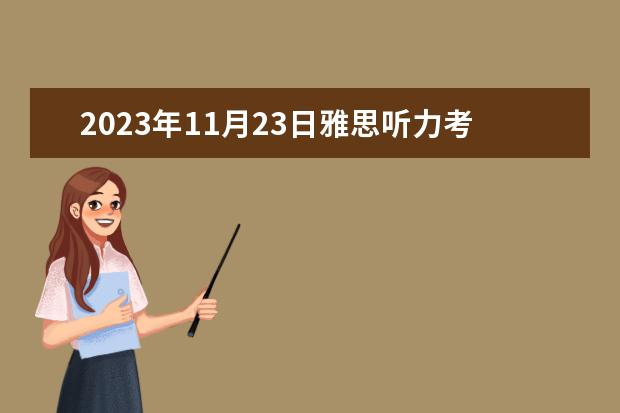 2023年11月23日雅思听力考试真题及答案(西双版纳雅思阅读真题及解析)
2023年11月23日雅思听力考试真题及答案(西双版纳雅思阅读真题及解析)
2023年11月23日雅思听力考试真题及答案您好,我是专注留学考试规划和留学咨询的小钟老师。在追寻留
2023年11月28日 22:11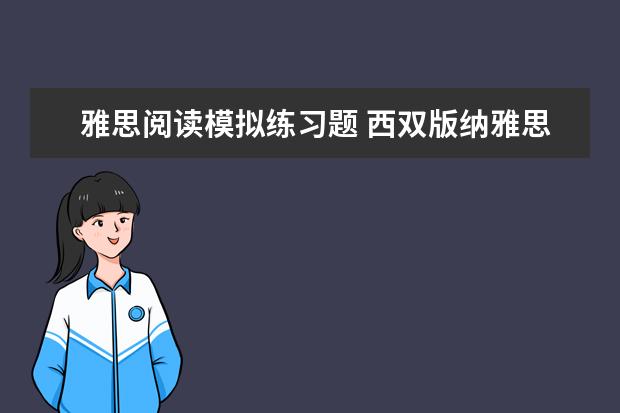 雅思阅读模拟练习题 西双版纳雅思阅读真题及解析
雅思阅读模拟练习题 西双版纳雅思阅读真题及解析
西双版纳雅思阅读真题及解析相信大部分烤鸭在雅思阅读备考中都会大量的做一些雅思阅读真题,在这些雅思阅读
2023年09月28日 02:42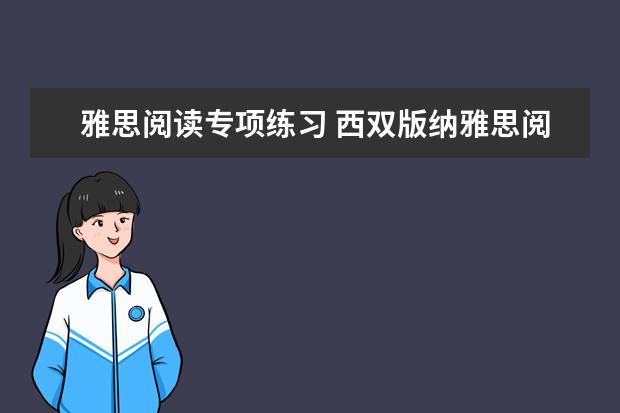 雅思阅读专项练习 西双版纳雅思阅读真题及解析
雅思阅读专项练习 西双版纳雅思阅读真题及解析
2023年5月22日雅思考试真题答案阅读部分您好,我是专注留学考试规划和留学咨询的小钟老师。在追寻留
2023年09月28日 03:41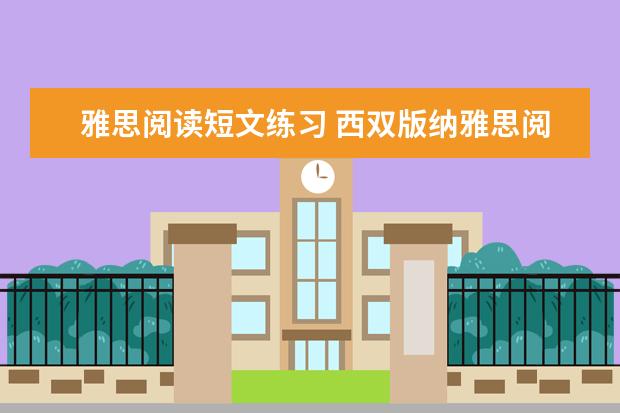 雅思阅读短文练习 西双版纳雅思阅读真题及解析
雅思阅读短文练习 西双版纳雅思阅读真题及解析
2021年4月雅思阅读考试真题答案一般雅思考试的阅读部分是会有三篇文章,其中难度都不一样。大家来看这
2023年09月28日 05:03 雅思阅读练习文稿 西双版纳雅思阅读真题及解析
雅思阅读练习文稿 西双版纳雅思阅读真题及解析
西双版纳雅思阅读真题及解析相信大部分烤鸭在雅思阅读备考中都会大量的做一些雅思阅读真题,在这些雅思阅读
2023年09月28日 09:05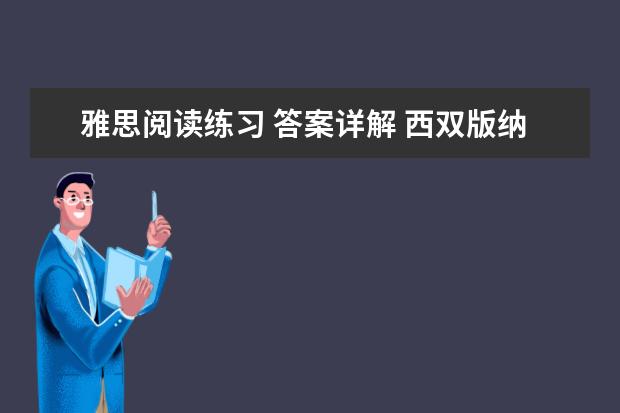 雅思阅读练习 答案详解 西双版纳雅思阅读真题及解析
雅思阅读练习 答案详解 西双版纳雅思阅读真题及解析
2023雅思阅读真题全面解析及答案(2)您好,我是专注留学考试规划和留学咨询的小钟老师。在追寻留学梦
2023年09月28日 11:30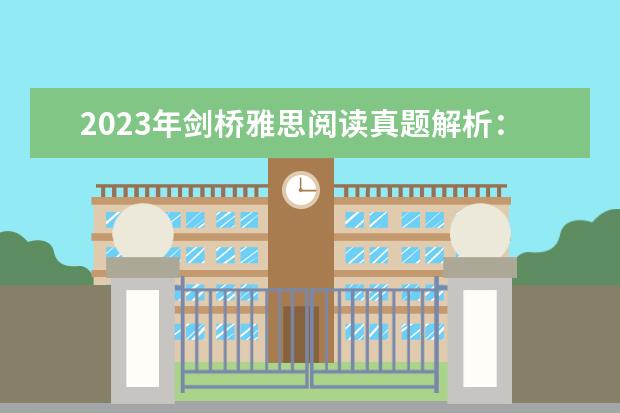 2023年剑桥雅思阅读真题解析:Thomas Young 剑桥雅思10 test3 阅读 答案 西双版纳雅思阅读真题及解析
2023年剑桥雅思阅读真题解析:Thomas Young 剑桥雅思10 test3 阅读 答案 西双版纳雅思阅读真题及解析
2023年剑桥雅思阅读真题解析:ThomasYoung您好,我是专注留学考试规划和留学咨询的小钟老师
2023年10月26日 11:40 西双版纳雅思阅读真题及解析(2023年6月19日雅思阅读考试真题答案)
西双版纳雅思阅读真题及解析(2023年6月19日雅思阅读考试真题答案)
西双版纳雅思阅读真题及解析相信大部分烤鸭在雅思阅读备考中都会大量的做一些雅思阅读真题,在这些雅思阅读
2023年10月28日 00:07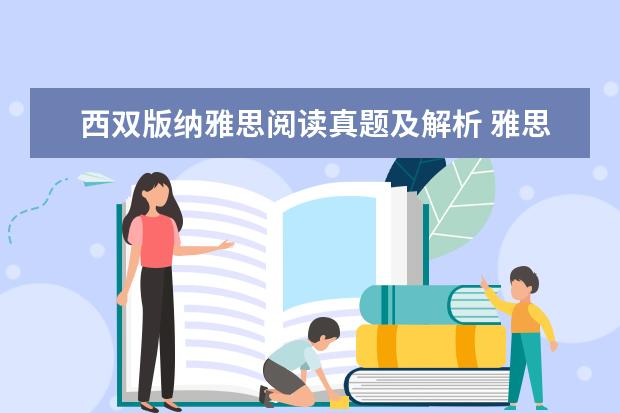 西双版纳雅思阅读真题及解析 雅思阅读判断题正误解析 请问2023年6月17日雅思阅读真题与答案
西双版纳雅思阅读真题及解析 雅思阅读判断题正误解析 请问2023年6月17日雅思阅读真题与答案
西双版纳雅思阅读真题及解析相信大部分烤鸭在雅思阅读备考中都会大量的做一些雅思阅读真题,在这些雅思阅读
2023年10月28日 05:30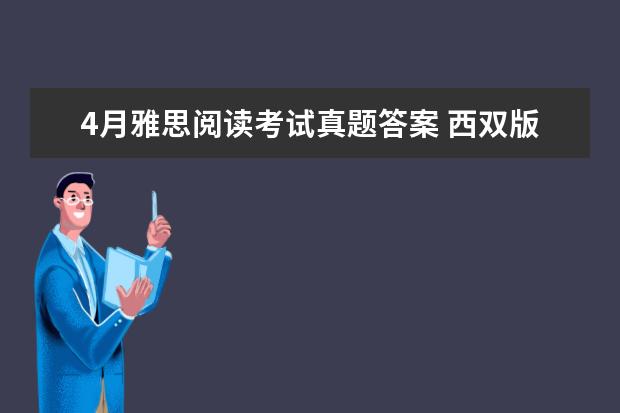 4月雅思阅读考试真题答案 西双版纳雅思阅读真题及解析 剑桥雅思阅读AUSTRALIA’SSPORTINGSUCCESS及答案解析
4月雅思阅读考试真题答案 西双版纳雅思阅读真题及解析 剑桥雅思阅读AUSTRALIA’SSPORTINGSUCCESS及答案解析
2021年4月雅思阅读考试真题答案一般雅思考试的阅读部分是会有三篇文章,其中难度都不一样。大家来看这
2023年10月30日 10:17